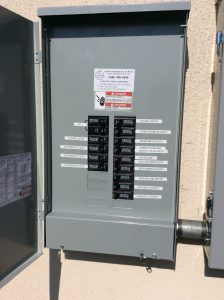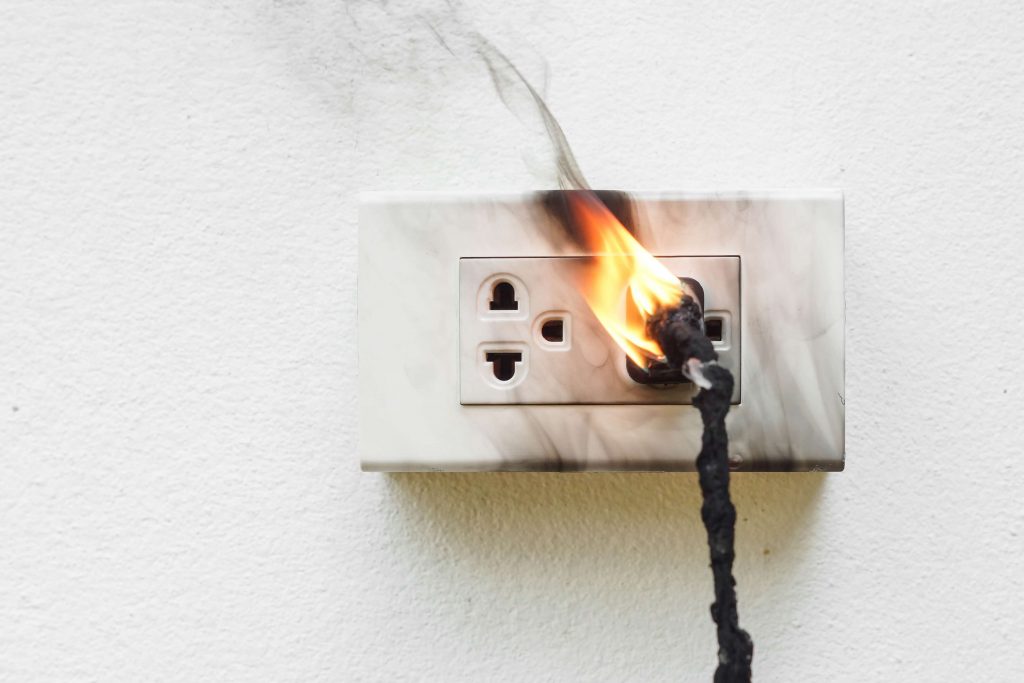 What is an electrical overload?
What is an electrical overload?
When too much current passes through your electrical wires, you may experience an electrical overload. When this happens, the wires may heat up and melt which may result in a fire starting.
Appliances like televisions, microwaves, hairdryers are the highest power-consuming devices in the average home. The power consumption can go higher once you start thinking of lighting and other smaller devices. A high number of devices will lead to many electrical circuits on your electrical panel.
You run the risk of having an electrical overload once you begin to draw too much power from an electrical source or circuit. While different buildings have different designs, circuit breakers or fuses are often employed to prevent electrical overload. A fuse will burn itself out to perform its job and will need a replacement once it has done so. With circuit breakers, they only trip off if a lot of electrical current is drawn.
Steps to Take to Avoid Electrical Overload
There are a few steps that you can take yourself to avoid the occurrence of an overload.
- Know what circuit powers what device. Identifying what circuit your highest power consuming devices are is the first step. A single circuit is usually dedicated to most of these devices. Such devices include furnaces, toasters, hairdryers, refrigerators, and microwaves. Once you have identified these circuits, it is necessary to pay particular attention to them and avoid connecting other devices to them.
- Avoid having too many connections to one circuit. Having a lot of devices drawing power from a circuit can cause an electrical overload. In most situations, you do not know how dangerous it is until the fuse burns out or the breaker trips off.
To find out what device is connected to a particular circuit, you could turn off one breaker after the other while turning on each device. This will help you determine where each connection goes on your board.
- Note how much power a circuit can supply. You should only connect the appropriately rated device to an equally rated circuit. With a rated voltage of 120 volts, a 15-amp circuit can only supply power of 1800 watts, anything more is an overload of the circuit. Put this in mind when connecting devices to a circuit. It is recommended that you do not load up a circuit to its maximum rating, this will allow for the connection of other irregularly used devices.
- Add more receptacles. At the Electric Connection, we find that most people do not consider getting new receptacles until the old ones burn out. This is wrong. You should get more or better receptacles once you realize that the present ones cannot supply all the electrical power you need. Getting a new outlet will offer you more options in terms of circuit connections and will help reduce downtime in case there is a damaged outlet.
If you are adding new receptacles, you will likely need the help of an electrician. All electrical safety procedures should be implemented before this is done. Contact The Electric Connection for the installation and to ensure you have enough space inside your panel to handle the load. If a panel upgrade is necessary, we will be able to assist as well!





 Electricity has been with us for decades. The industry continues to make new discoveries and update on former methods and as a homeowner, it might seem tasking to keep up. The good news is with every innovation comes safer, more efficient, and convenient electrical systems. You get to enjoy all the benefits still.
Electricity has been with us for decades. The industry continues to make new discoveries and update on former methods and as a homeowner, it might seem tasking to keep up. The good news is with every innovation comes safer, more efficient, and convenient electrical systems. You get to enjoy all the benefits still. The right question should be, why not hire a professional Los Angeles electrician? L.A is a beautiful city with lots of action, celebrities, and so on to take up your time and energy. Why include DIY electrical projects to the mix?
The right question should be, why not hire a professional Los Angeles electrician? L.A is a beautiful city with lots of action, celebrities, and so on to take up your time and energy. Why include DIY electrical projects to the mix? It’s just annoying to live in a home that does not have enough power. The voltage will drop frequently, and this can be damaging to your electronics. Situations like this indicate that you need to upgrade your electrical panel. Other reasons why you might need to upgrade your panel include:
It’s just annoying to live in a home that does not have enough power. The voltage will drop frequently, and this can be damaging to your electronics. Situations like this indicate that you need to upgrade your electrical panel. Other reasons why you might need to upgrade your panel include: Perhaps the reason your potential customers always choose the competition over you is nothing more than online reviews. Research says that a whopping 86% of customers read reviews for local businesses before making a decision. In recent times an equally large number of customers decide based on good reviews.
Perhaps the reason your potential customers always choose the competition over you is nothing more than online reviews. Research says that a whopping 86% of customers read reviews for local businesses before making a decision. In recent times an equally large number of customers decide based on good reviews. Finding a local electrician can prove daunting if you don’t know how or where to look. A local electrician is an electrician you can easily find in your area, state, or region. Several electricians have a wide service area that allows them to serve many areas at once as local technicians.
Finding a local electrician can prove daunting if you don’t know how or where to look. A local electrician is an electrician you can easily find in your area, state, or region. Several electricians have a wide service area that allows them to serve many areas at once as local technicians.  In the past, many homes could get away with using at most a 60 – 100 Amp service. But as technology evolves every day and homeowners are exposed to more and more appliances, 100 Amps can no longer cut it for most homes.
In the past, many homes could get away with using at most a 60 – 100 Amp service. But as technology evolves every day and homeowners are exposed to more and more appliances, 100 Amps can no longer cut it for most homes.  When you are not up for the huge investment on a central AC, a window AC may be your next best option. A window AC is typically installed at the window but unlike a central AC, they only service the rooms they are installed in. Only a central AC can cool all or many rooms at once. Read on as we explore what a window AC could mean for your energy bills.
When you are not up for the huge investment on a central AC, a window AC may be your next best option. A window AC is typically installed at the window but unlike a central AC, they only service the rooms they are installed in. Only a central AC can cool all or many rooms at once. Read on as we explore what a window AC could mean for your energy bills. When one or more outlets in the home suddenly stop working it’s easy to assume the worst. Before you panic, it’s good to know that there are some things you can try to solve the problem. However, when these don’t work, be sure to call in the pros.
When one or more outlets in the home suddenly stop working it’s easy to assume the worst. Before you panic, it’s good to know that there are some things you can try to solve the problem. However, when these don’t work, be sure to call in the pros.  Think about it; a wall outlet safe actually looks like a wall outlet. So no one would think to look there for your valuables. A conventional safe, however, is a different matter. It stands out as an easy target for a burglar or friendly neighborhood thief. You may prefer to do without the stress of having a large showy safe. Therefore, it’s no surprise that wall outlet safes are getting more popular.
Think about it; a wall outlet safe actually looks like a wall outlet. So no one would think to look there for your valuables. A conventional safe, however, is a different matter. It stands out as an easy target for a burglar or friendly neighborhood thief. You may prefer to do without the stress of having a large showy safe. Therefore, it’s no surprise that wall outlet safes are getting more popular.